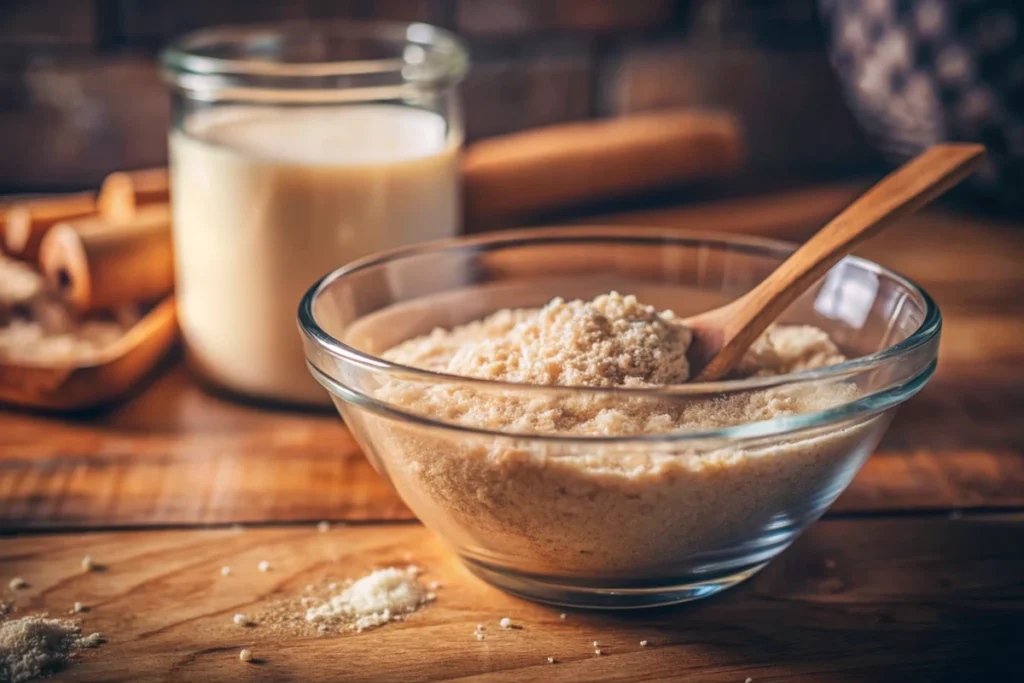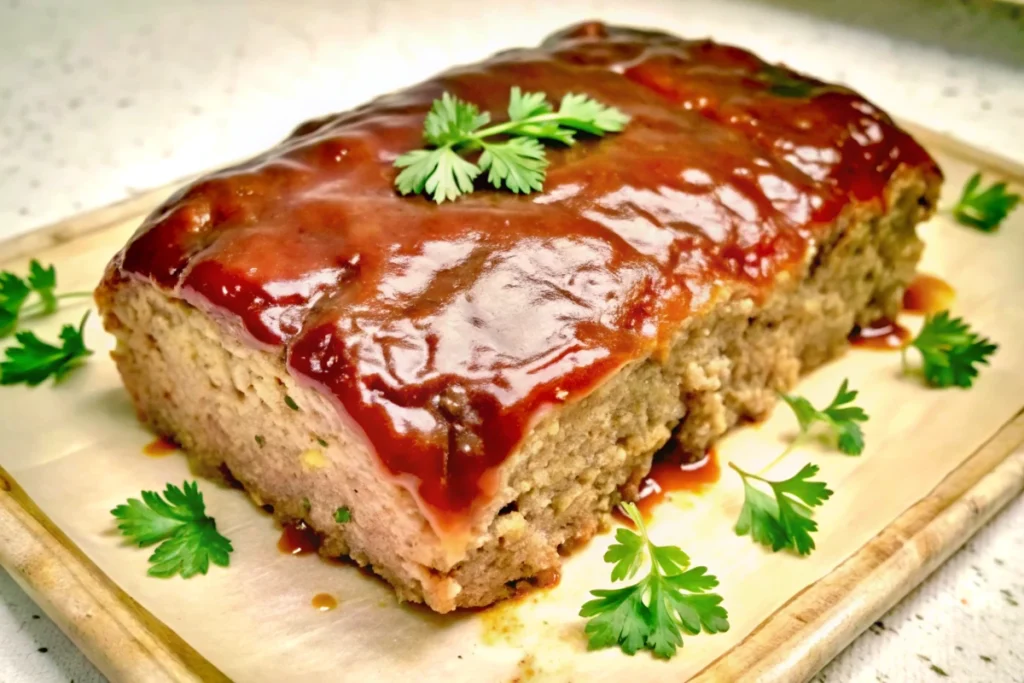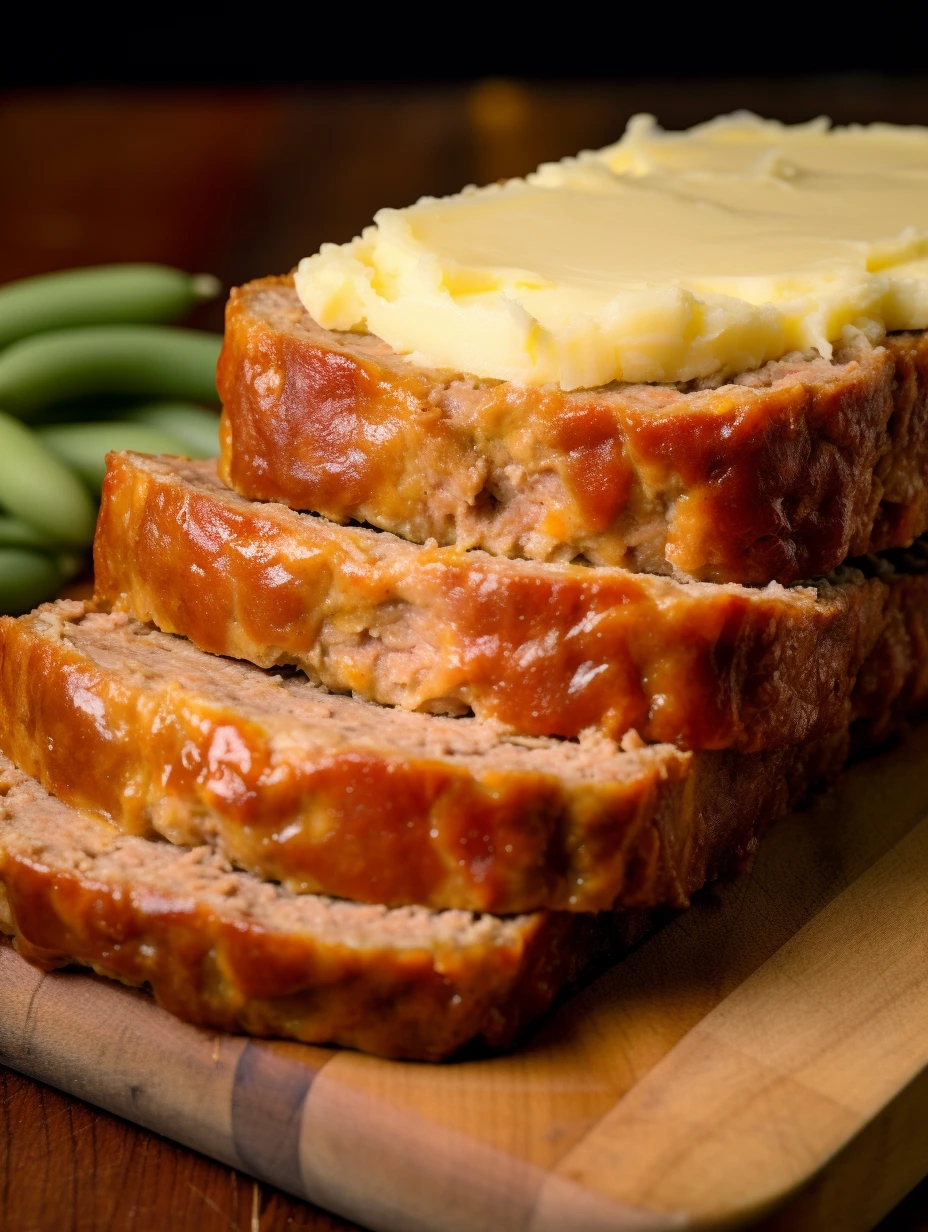What is the Secret to Moist Meatloaf?
Meatloaf is a beloved comfort food, but nothing is worse than slicing into a dry, crumbly mess. If you’ve ever wondered, “What is the secret to moist meatloaf?”, you’re not alone. The key lies in a combination of the right ingredients, proper cooking techniques, and a few clever tricks.
In this guide, we’ll explore how to keep your meatloaf tender and juicy—from choosing the best meat to adding moisture-packed ingredients like milk-soaked breadcrumbs and vegetables. We’ll also cover cooking techniques that lock in moisture and prevent dryness. Whether you’re a beginner or a seasoned cook, these expert tips will help you achieve the perfect meatloaf every time.
Choosing the Right Meat
Your choice of meat is the foundation of a moist meatloaf. The fat content, type of meat, and combination of proteins all play a crucial role in ensuring tenderness.
Fat Content Matters
Many people think using lean meat is the healthier option, but when it comes to meatloaf, fat is your best friend. The secret to juicy meatloaf is using ground beef with at least 80/20 fat content. Here’s why:
- Too much lean meat (90/10 or leaner) → Results in a dry, crumbly texture.
- 80/20 beef → Provides the perfect balance of flavor and juiciness.
- 70/30 beef → Extra juicy but can be too greasy if not balanced with other ingredients.
If you’re using leaner beef, you can add extra fat by mixing in ground pork or veal. These meats naturally contain more fat and moisture, which helps prevent dryness.
Best Meat Combinations for Moist Meatloaf
Using a blend of meats is a game-changer. Here are the best combinations:
- Classic Mix: 50% ground beef + 25% ground pork + 25% ground veal
- Budget-Friendly Option: 70% ground beef + 30% ground pork
- Leaner but Still Moist: 50% ground turkey + 50% ground beef (80/20)
If you prefer a leaner meatloaf (like turkey or chicken), consider adding extra binders and moisture boosters—which we’ll cover in the next section—to avoid a tough, dry texture.
Pro Tip: Don’t Overwork the Meat
Overmixing ground meat can break down the proteins too much, leading to a dense, rubbery meatloaf. Mix gently until just combined—your hands are the best tool for the job!
The Role of Binders and Moisture Enhancers in a Juicy Meatloaf
Even if you choose the perfect meat, your meatloaf can still turn out dry without the right binders and moisture enhancers. These ingredients not only hold the meat together but also help lock in juiciness and prevent crumbling.
Breadcrumbs vs. Crushed Crackers: The Best Binder for Moist Meatloaf
One of the secrets to moist meatloaf is using the right dry binder. Breadcrumbs and crushed crackers absorb moisture, preventing the meat from becoming dense and dry. But which one should you use?
- Breadcrumbs (plain or panko) – Light, airy, and great for holding moisture.
- Crushed crackers (saltines or Ritz) – Add a buttery flavor and extra tenderness.
For an even softer, juicier texture, try soaking your breadcrumbs or crackers in liquid before mixing them in. This brings us to the next crucial step.
Milk Soaking Method: A Key Secret to a Tender Meatloaf

If you’ve ever asked, “What is the secret to moist meatloaf?”, milk-soaked breadcrumbs are one of the best answers. Here’s why:
- Milk adds moisture – The bread absorbs the liquid, keeping the meat tender.
- Prevents toughness – Dry binders can suck moisture away from the meat, but soaking them first ensures they give back moisture instead.
- Enhances flavor – The extra richness makes the meatloaf taste better.
If you’re lactose intolerant or just out of milk, you can use broth, heavy cream, or even plant-based milk as a substitute.
Eggs: The Essential Ingredient for a Moist and Firm Meatloaf
Eggs are another must-have ingredient for moist meatloaf. They help bind everything together while adding a bit of extra moisture. Typically, you’ll want to use one egg per pound of meat for the best results.
Vegetable Additions: How to Boost Meatloaf Moisture Naturally
Adding finely chopped or pureed vegetables is another secret to juicy meatloaf. Vegetables contain water, which releases as they cook, keeping the meatloaf moist and flavorful. Try:
- Onions – Classic and naturally sweet when cooked.
- Bell peppers – Add a slight crunch and mild sweetness.
- Celery – Brings an earthy flavor and extra moisture.
For best results, sauté the veggies before adding them to the mixture. This removes excess water, preventing the meatloaf from getting soggy while still keeping it tender.
Liquid Additions – What is the Secret to Moist Meatloaf?
Using the right liquids can take your meatloaf from dry and bland to juicy and flavorful. While the meat and binders provide some moisture, adding extra liquid ensures a soft, tender bite every time.
Milk, Broth, or Water: Which Keeps Meatloaf the Juiciest?
You might wonder, “Is it better to use milk or water in meatloaf?” While both can add moisture, milk is usually the best option. Here’s a breakdown:
- Milk – Adds richness and tenderness, making meatloaf softer.
- Beef or chicken broth – Boosts flavor while keeping it moist.
- Water – Works in a pinch but doesn’t add any flavor.
For the best results, mix a few tablespoons of liquid directly into the meat mixture. This ensures even moisture distribution.
Ketchup, Mustard, and Worcestershire: Flavorful Moisture Boosters
Many classic meatloaf recipes use ketchup, mustard, or Worcestershire sauce—not just for taste, but for added moisture. These ingredients help keep the meat juicy while adding depth to the flavor.
- Ketchup – Adds sweetness, acidity, and a slight tang.
- Mustard – Balances the richness with a bit of sharpness.
- Worcestershire sauce – Enhances umami, making the meat taste richer.
Mix these into the meat before baking, or use them as a glaze for extra juiciness.
Using a Pan of Water in the Oven: The Secret to Preventing Dry Meatloaf
A little-known trick for locking in moisture is placing a pan of water on the lower oven rack while baking your meatloaf. The steam helps maintain a humid environment, preventing the meat from drying out. This method is especially useful if you’re using leaner meats like turkey or chicken.
Cooking Techniques for Maximum Moisture
Even if you use the best ingredients, the way you cook your meatloaf can make or break its texture. If you’ve ever asked, “What is the secret to moist meatloaf?”, cooking it properly is just as important as what goes into it. Let’s go over the best techniques to ensure a juicy, tender result every time.
The Best Temperature and Cooking Time
Baking meatloaf at the right temperature ensures it stays moist while fully cooking through. The ideal oven temperature is 350°F (175°C). Here’s why:
- Too hot (400°F and above) → The outside burns before the inside is done.
- Too low (below 325°F) → Meatloaf can become dense and take too long to cook.
For the best results, bake a 2-pound meatloaf for about 55-65 minutes. Always check the internal temperature with a meat thermometer—it should read 160°F (71°C) for beef and 165°F (74°C) for poultry.
Covered vs. Uncovered Baking: Which is Better?
A common question is: “Do you cook meatloaf covered or uncovered?” The answer depends on how moist you want it to be.
- Covering with foil for the first 30 minutes → Traps steam, keeping the meatloaf moist.
- Uncovering for the last 20-30 minutes → Allows the glaze to caramelize, adding flavor.
For extra moisture, you can tent the meatloaf loosely with foil after removing it from the oven and let it rest.
Resting Time: Why It’s Essential for Juicy Meatloaf
Letting meatloaf rest for 10-15 minutes before slicing allows the juices to redistribute. Cutting too soon releases moisture, leaving you with a dry, crumbly texture.
Using a Meat Thermometer for Perfect Doneness
A meat thermometer takes the guesswork out of cooking. Insert it into the thickest part of the meatloaf—when it hits 160°F, you know it’s done. This prevents overcooking, which is one of the biggest culprits behind dry meatloaf.
Enhancing Flavor Without Drying It Out
While moisture is key, a great meatloaf should also be packed with flavor. The right seasonings, sauces, and glazes can add depth and richness while keeping the meat juicy.
Spices and Seasonings That Boost Flavor
A bland meatloaf is just as disappointing as a dry one. Here are the best spices to elevate your recipe:
- Garlic powder & onion powder – Add savory depth without overpowering.
- Paprika & black pepper – Provide a subtle warmth and smoky note.
- Italian seasoning or dried oregano – Adds an herby, aromatic touch.
To keep flavors balanced, use about 1 teaspoon per pound of meat. Don’t forget salt—seasoning properly enhances natural flavors without drying out the meat.
The Magic of Worcestershire Sauce and Soy Sauce
Worcestershire sauce and soy sauce aren’t just for taste—they help keep meatloaf moist. These umami-packed ingredients:
- Add richness and depth without making the meat salty.
- Help tenderize the meat by breaking down proteins.
- Prevent dryness by adding extra moisture to the mix.
For the best results, mix 1-2 tablespoons into the meat mixture before baking.
Glazing for Extra Juiciness: Ketchup, BBQ Sauce, or Brown Sugar?

A glaze does more than add flavor—it locks in moisture. The best glazes include a balance of sweet, tangy, and savory flavors. Popular choices:
- Ketchup glaze – Classic and slightly sweet.
- BBQ sauce glaze – Smoky and bold.
- Brown sugar & mustard glaze – Caramelized and tangy.
Brush the glaze over the top of the meatloaf 15-20 minutes before it’s done for a perfectly glossy, flavorful finish.
Common Meatloaf Mistakes That Lead to Dryness
Even with the best ingredients, simple mistakes can turn a moist, flavorful meatloaf into a dry, tough dish. If you’ve ever asked, “What is the secret to moist meatloaf?”, avoiding these common errors is just as important as using the right ingredients.
Overmixing the Meat Mixture
One of the biggest mistakes is overmixing the meat. When you mix too much, the proteins in the meat break down, creating a dense, rubbery texture instead of a tender, juicy loaf.
How to avoid it:
- Mix gently with your hands or a spoon until just combined.
- Stop as soon as the ingredients are evenly distributed.
Using Too Little Fat or Liquid
Many people try to make a healthier meatloaf by using lean meat without adding extra fat or moisture. This almost always leads to a dry, crumbly texture.
How to fix it:
- Use 80/20 ground beef or mix in pork or veal for extra fat.
- Always add a liquid like milk, broth, or Worcestershire sauce.
Overcooking: The Biggest Enemy of Moist Meatloaf
Cooking meatloaf for too long will dry it out, no matter how much moisture you add.
How to prevent this:
- Bake at 350°F (175°C) for the best balance of doneness and juiciness.
- Use a meat thermometer and remove the meatloaf once it reaches 160°F (71°C).
Frequently Asked Questions (FAQs)
When it comes to making the perfect meatloaf, people have a lot of questions. Below are some of the most commonly asked ones.
Is it better to use milk or water in meatloaf?
Milk is the best choice because it adds both moisture and richness. Water works, but it doesn’t enhance the flavor. If you’re avoiding dairy, broth or plant-based milk are great substitutes.
Do you cook meatloaf covered or uncovered?
Both methods have their benefits. Covering the meatloaf for the first 30 minutes helps retain moisture, while uncovering it for the last 20 minutes allows the glaze to caramelize for extra flavor.
What can I add to meatloaf so it’s not dry?
To keep meatloaf moist, add ingredients that trap and hold moisture, such as:
- Milk-soaked breadcrumbs or crackers
- Finely chopped onions, peppers, or celery
- Condiments like Worcestershire sauce or ketchup
Why do people put milk in their meatloaf?
Milk-soaked breadcrumbs help create a soft, tender texture. The milk hydrates the bread, preventing it from drawing moisture away from the meat. This results in a juicier, more flavorful meatloaf.
Final Tips for the Perfect Moist Meatloaf
By now, you know the answer to “What is the secret to moist meatloaf?”—it’s a combination of using the right ingredients, mixing gently, and cooking properly. But before you head to the kitchen, here are a few final tips to guarantee a juicy, flavorful meatloaf every time.
Let the Meatloaf Rest Before Slicing
One of the easiest ways to ruin a perfectly cooked meatloaf is cutting into it too soon. When fresh out of the oven, the juices are still moving inside the meat. Slicing too early causes them to spill out, leaving you with a dry texture.
Solution: Let the meatloaf rest for 10-15 minutes after baking. This allows the juices to redistribute, keeping every bite moist and tender.
Experiment with Different Ingredients
Once you’ve mastered the basics, don’t be afraid to experiment. Try adding:
- Shredded cheese for extra richness.
- Diced mushrooms to enhance moisture and umami.
- BBQ sauce or honey mustard in place of ketchup for a twist on the glaze.
Small tweaks can take your meatloaf from good to unforgettable!
Conclusion
So, what is the secret to moist meatloaf? It all comes down to fat content, binders, moisture-rich ingredients, and proper cooking techniques.
To recap:
- Use 80/20 ground beef (or a mix of meats) for the best texture.
- Soak breadcrumbs or crackers in milk to retain moisture.
- Mix gently to avoid a dense, dry meatloaf.
- Bake at 350°F and use a meat thermometer to prevent overcooking.
- Let it rest before slicing to keep the juices locked inside.
By following these tips, you’ll never have to suffer through a dry meatloaf again! Whether you’re making a classic family recipe or experimenting with new flavors, these techniques will help you achieve the perfect, juicy meatloaf every time.
Now, it’s your turn—try these tips and enjoy a meatloaf that’s moist, flavorful, and downright delicious! 🍽️

